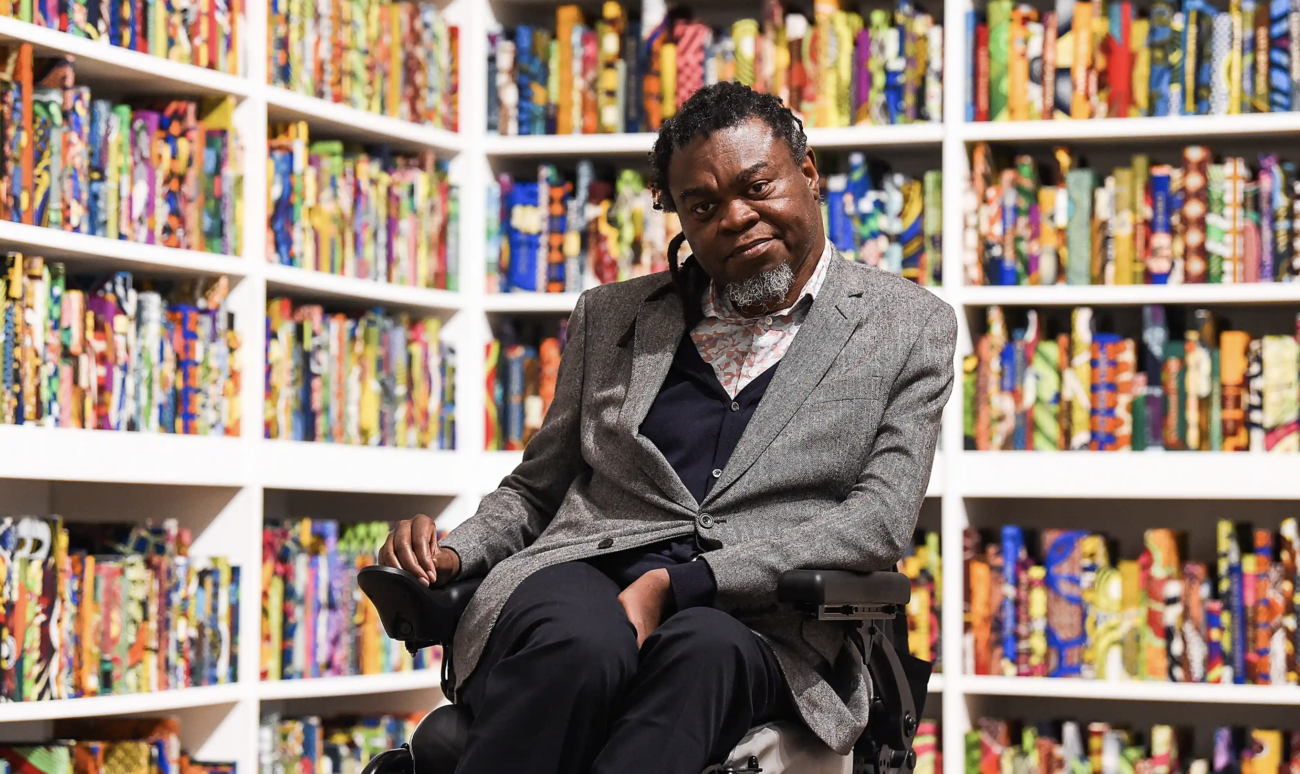British-Nigerian artist Yinka Shonibare CBE RA is known for his incisive exploration of cultural identity, colonial history, and globalization. His work challenges ideas of authenticity and hybridity, often incorporating Dutch wax textiles—a fabric commonly linked to African identity but steeped in colonial trade history. Across his body of work, Shonibare probes power structures, migration, and the tangled legacies of Africa and Europe, each artwork offering a distinct yet interconnected critique of contemporary global tensions.
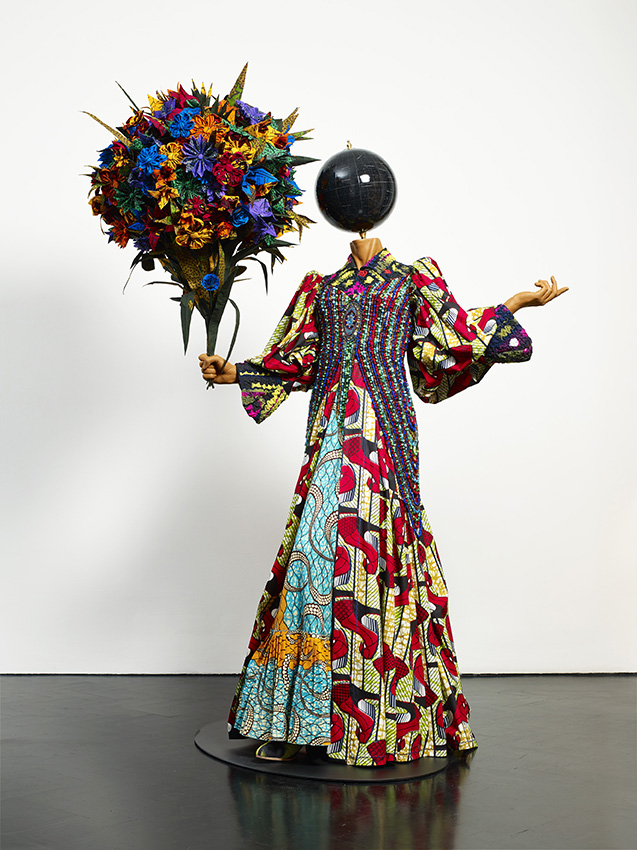
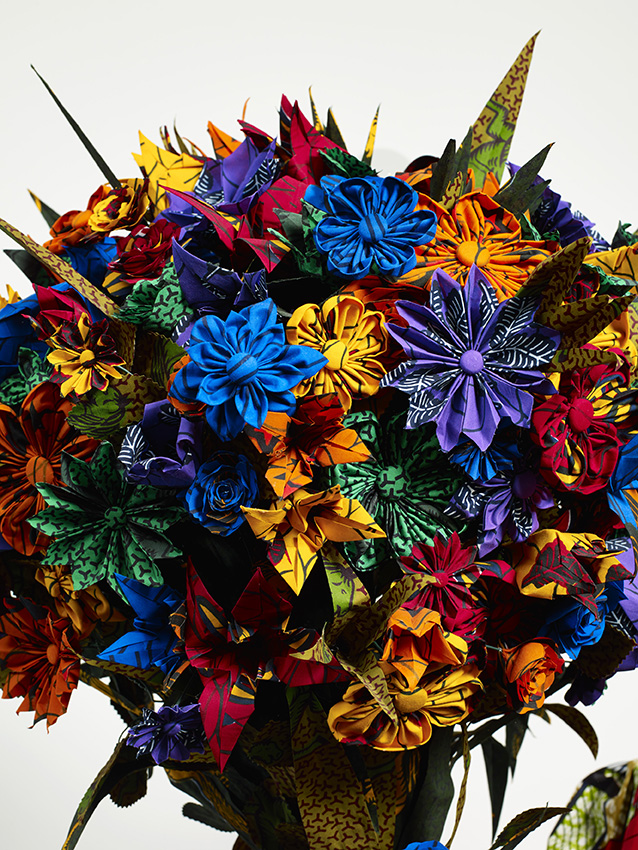
Ms. Utopia exemplifies Shonibare’s ongoing engagement with gender, class, and idealism. The piece presents a globe-headed female figure clad in his signature Dutch wax textiles, simultaneously invoking and subverting European Enlightenment ideals. The recurring use of a globe as a head symbolizes how people are inherently connected, but world views can be vastly different. The title Ms. Utopia is deliberately paradoxical, contrasting utopian optimism with the historical exclusion of women—especially women of color—from Western political and philosophical thought.
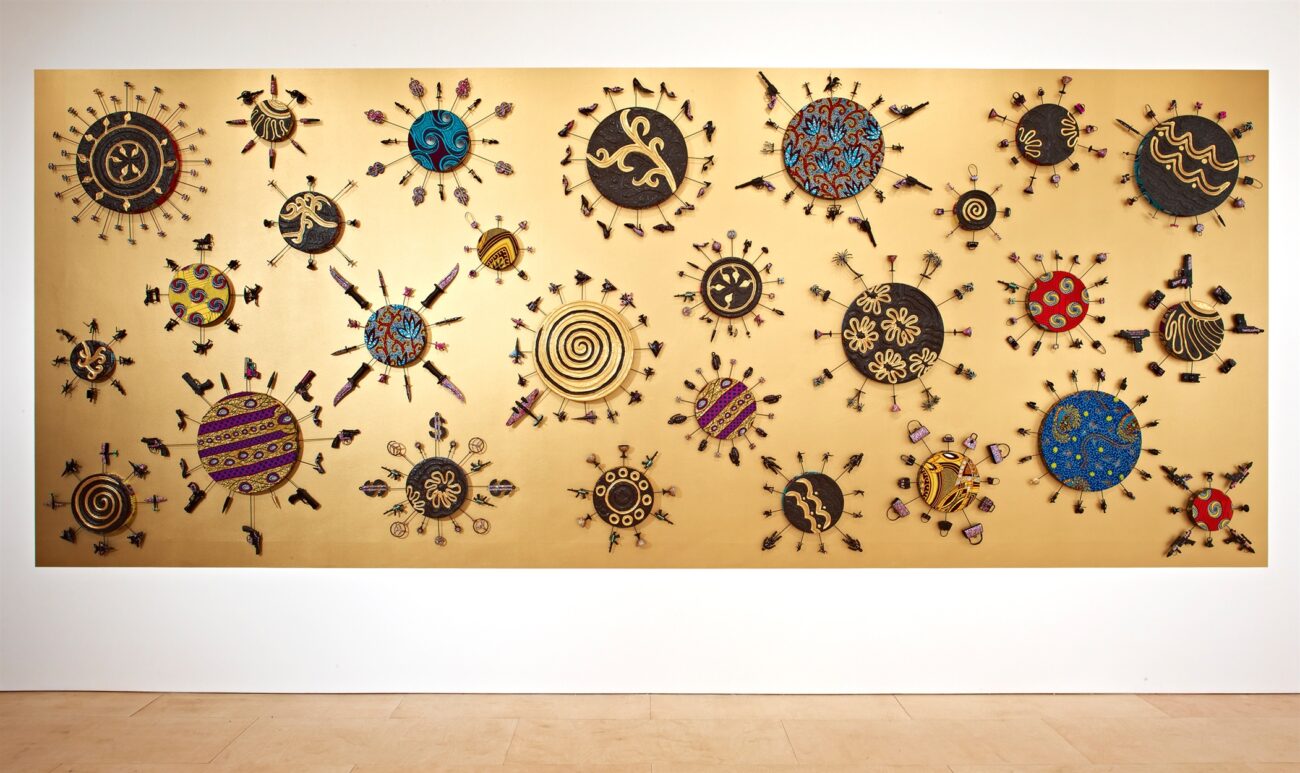
Shonibare’s Bling Painting series dissects the intersections of wealth, excess, and historical exploitation. By layering bold colors and intricate textures, these works recall the grandeur of European aristocracy while integrating African textile patterns, whose colonial past complicates their meaning. The term “bling” itself speaks to capitalism, overabundance, and how colonial legacies continue to shape contemporary luxury markets. Through this African-European hybrid aesthetic, Bling Painting asks: Who has profited from these historical narratives of wealth, and who has been left behind?
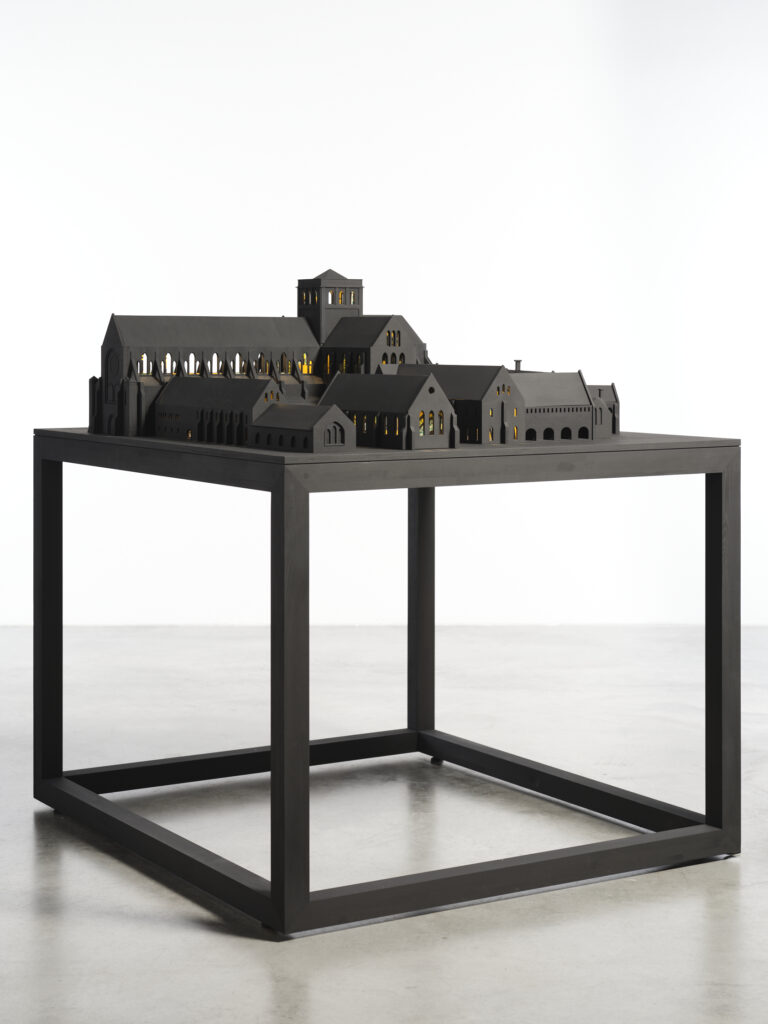
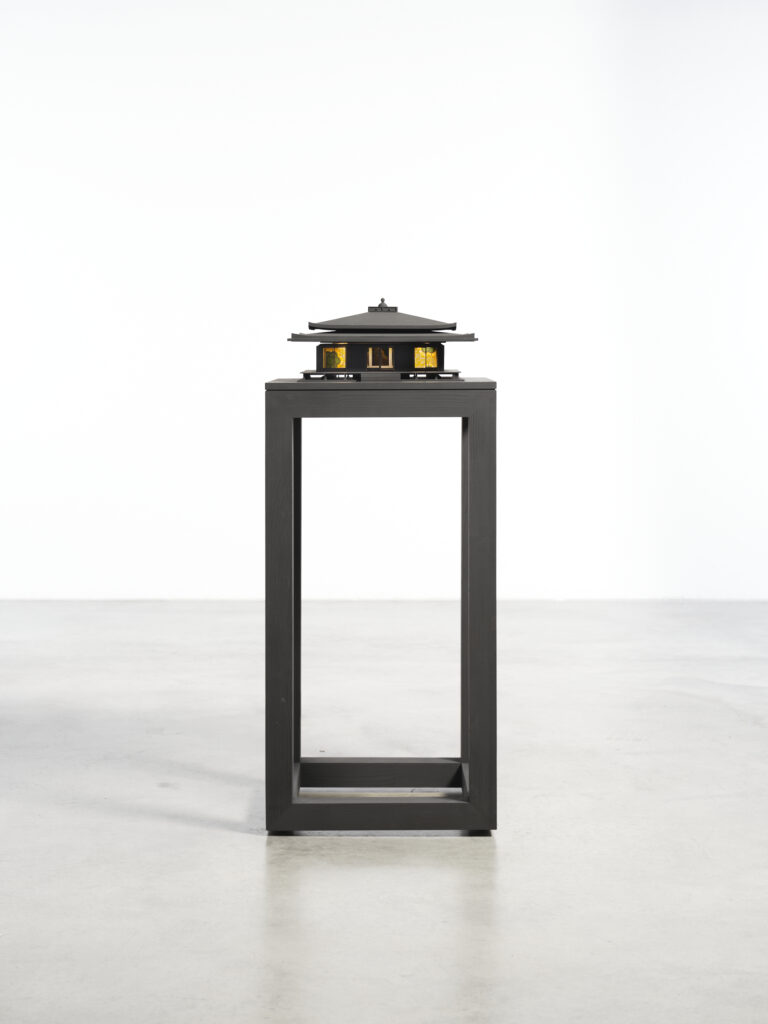
In Sanctuary City, Shonibare engages with one of the most pertinent issues of our time—migration. Using sculptural and installation elements, he creates a space for dialogue about borders, belonging, and the responsibilities of nations toward displaced populations. The title references urban centers that defy national policies to offer protection to migrants, known as sanctuary cities. By showing how migration is a historical constant shaped by war, colonialism, and economic forces, Shonibare challenges viewers to rethink nationalism, hospitality, and human rights in an era of growing xenophobia and border restrictions.
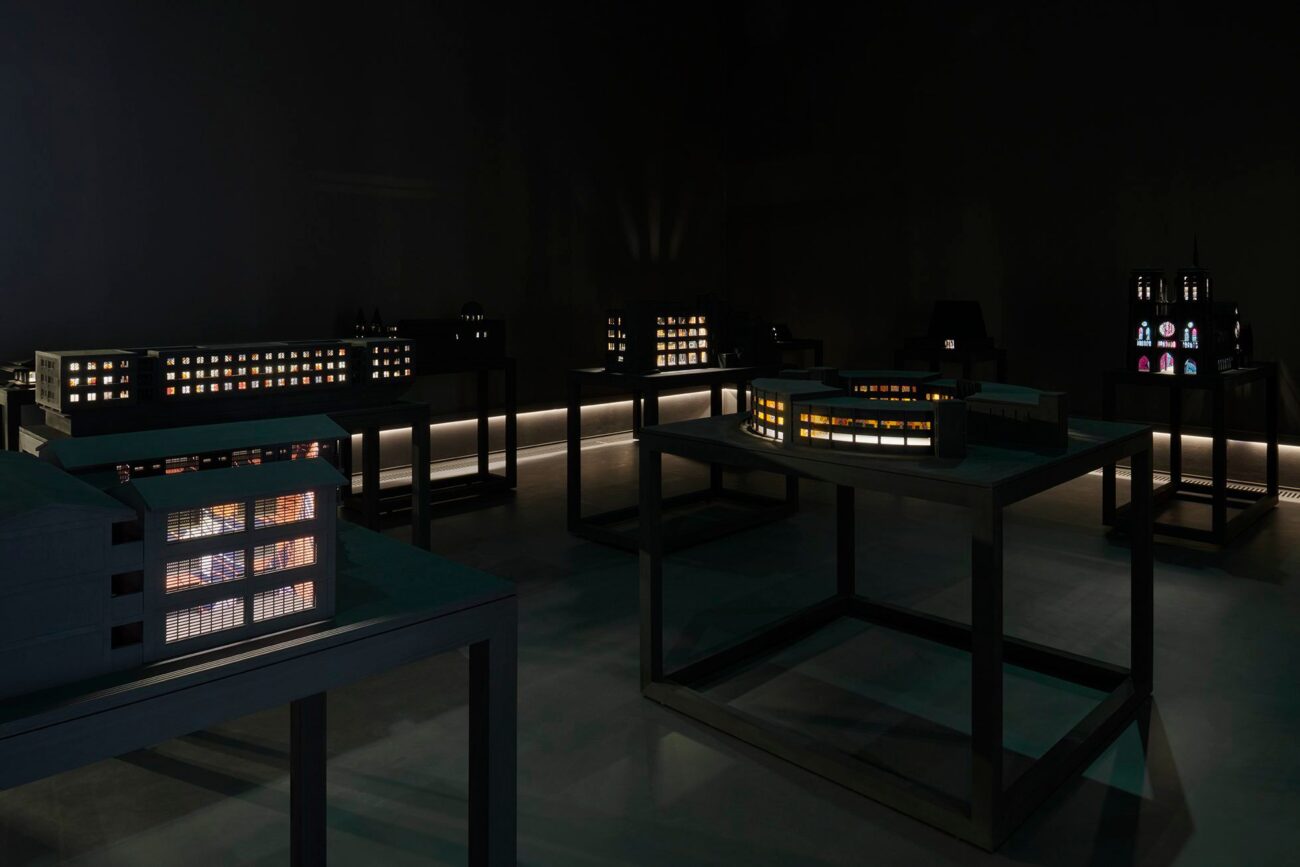
Through Ms. Utopia, Bling Painting, and Sanctuary City, Yinka Shonibare CBE RA continues to interrogate history, identity, and power on a global scale. His work resists neat categorization, instead embracing the complexity of cultural and material hybridity. By fusing rich visual aesthetics with historical inquiry, he opens up space for conversations about colonial legacies, modern inequalities, and the potential for a more interconnected and inclusive future. Shonibare’s art is a compelling meditation on identity in a world continually shaped by history, migration, and cultural exchange.
Top image: Yinka Shonibare CBE in front of his work The British Library, at Tate Modern. © Yinka Shonibare CBE. Photo: Tabatha Fireman.
Written and designed by Sarah Greenwood.

